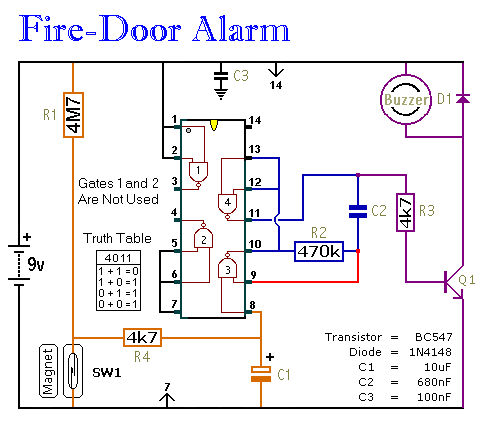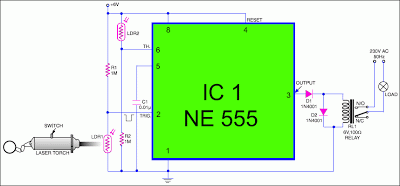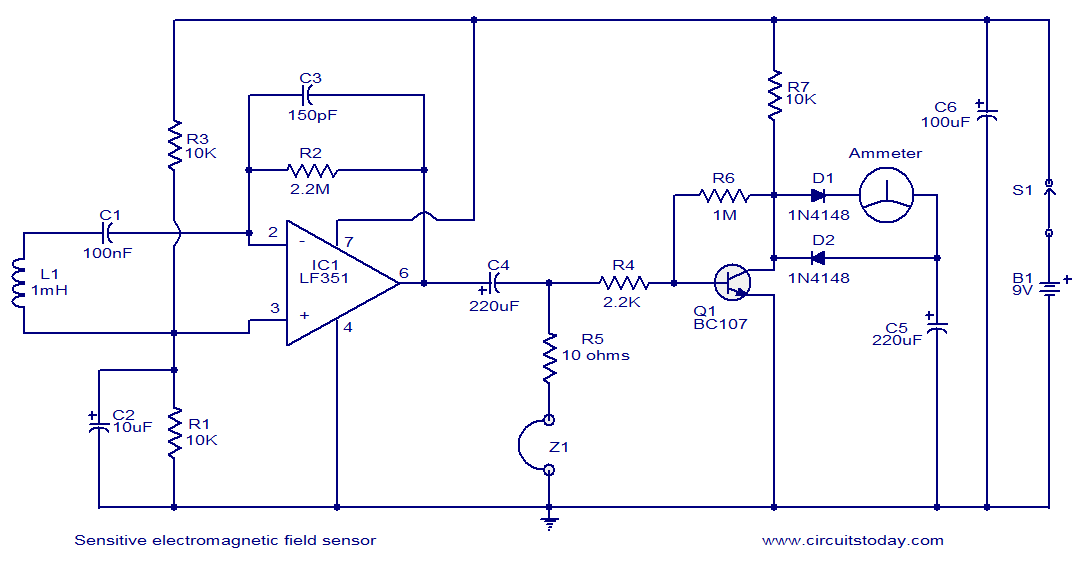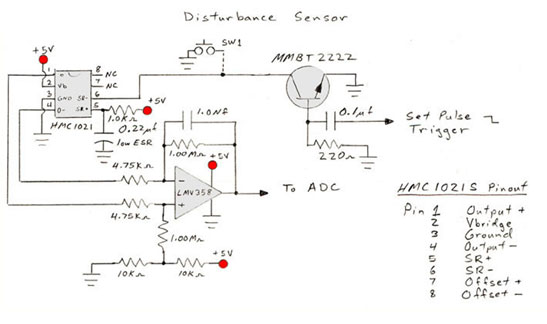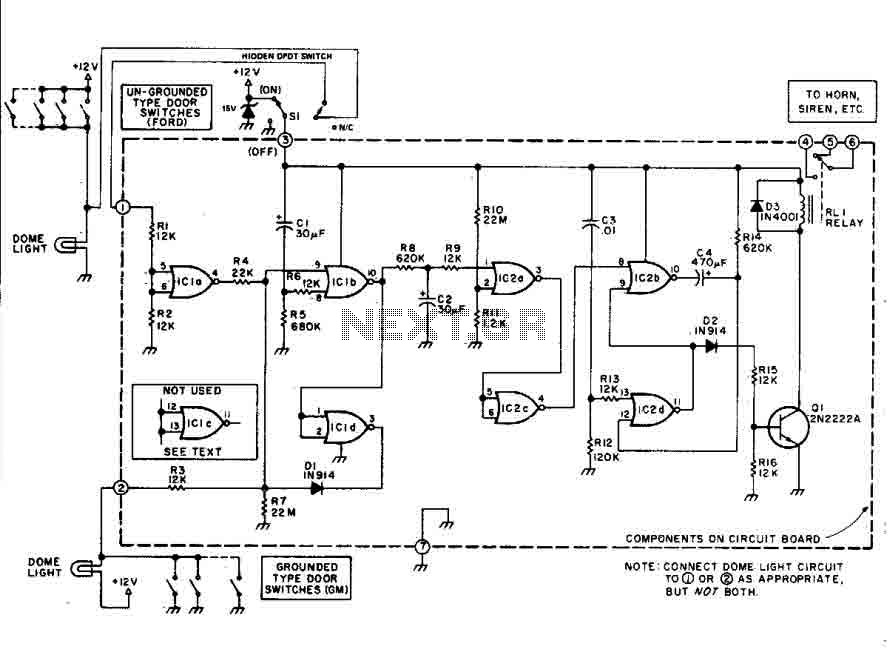
Magnetic Reed Switch Alarm

This circuit serves as an alarm system suitable for both home security and personal belongings such as handbags. When installed in a home, it can be positioned on doors or windows, and when used for bags, it provides a portable security solution.
The circuit design consists of various components that work together to detect unauthorized access and trigger an alarm. At its core, the system typically utilizes a motion sensor or a magnetic switch. For home installations, a magnetic reed switch can be placed on the door or window frame, with a corresponding magnet on the door or window itself. When the door or window is opened, the magnet moves away from the switch, causing a change in the circuit state, which activates the alarm.
For portable applications, such as in handbags, a compact motion sensor can be integrated into the bag's lining. This sensor detects movement or tampering, triggering the alarm when it senses an unauthorized attempt to access the bag. The alarm signal can be generated using a piezo buzzer or a small speaker, producing a loud sound to deter potential thieves.
Power for the circuit can be supplied by batteries for portability, or it can be hardwired for home installations. A power management module may be included to optimize battery life and ensure reliable operation. Additionally, a simple control interface, such as a toggle switch or a remote control, allows the user to easily activate or deactivate the alarm system.
In summary, the described alarm circuit is a versatile security solution that can be adapted for various applications, providing effective monitoring and protection for both homes and personal belongings.This circuit is made to be an alarm, both for home and handbags. If it is installed for home it will placed on door or windows, and if it is installed for bags. 🔗 External reference
The circuit design consists of various components that work together to detect unauthorized access and trigger an alarm. At its core, the system typically utilizes a motion sensor or a magnetic switch. For home installations, a magnetic reed switch can be placed on the door or window frame, with a corresponding magnet on the door or window itself. When the door or window is opened, the magnet moves away from the switch, causing a change in the circuit state, which activates the alarm.
For portable applications, such as in handbags, a compact motion sensor can be integrated into the bag's lining. This sensor detects movement or tampering, triggering the alarm when it senses an unauthorized attempt to access the bag. The alarm signal can be generated using a piezo buzzer or a small speaker, producing a loud sound to deter potential thieves.
Power for the circuit can be supplied by batteries for portability, or it can be hardwired for home installations. A power management module may be included to optimize battery life and ensure reliable operation. Additionally, a simple control interface, such as a toggle switch or a remote control, allows the user to easily activate or deactivate the alarm system.
In summary, the described alarm circuit is a versatile security solution that can be adapted for various applications, providing effective monitoring and protection for both homes and personal belongings.This circuit is made to be an alarm, both for home and handbags. If it is installed for home it will placed on door or windows, and if it is installed for bags. 🔗 External reference
